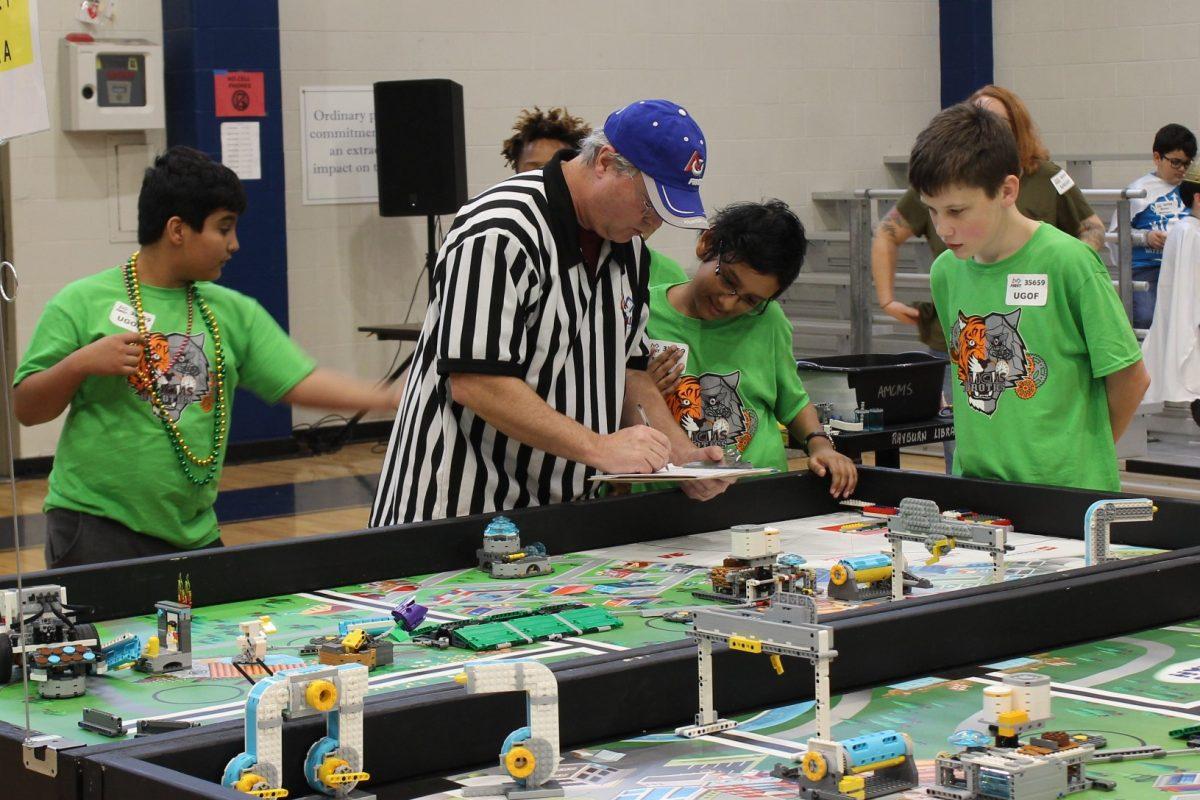Young students dressed in colorful t-shirts, costume hats and even capes took over Sam Rayburn Intermediate School to display their robots and moving Lego structures for a worldwide STEM competition on Saturday.
Fifteen Central Texas teams participated in the First Lego League (FLL) Qualifier, a Lego robot and structure building competition for young students. The competition was hosted by Sam Rayburn Intermediate School in Bryan and presented by A&M’s College of Engineering and Aggie volunteers.
FLL is a STEM program for students ranging from kindergarten to eighth grade. This year’s challenge was hydrodynamics. Students were required to build a structure or robot, depending on their age level, that could solve a real-life water-related issue such as a lack of water conservation or contaminated water.
The criteria for a high score in FLL is not only creating a working, useful robot or structure. It also requires students’ display of professionalism by presentation to judges, and an entire section of the final score involves students’ display of cooperation as a team.
Vikas Potluri, electrical engineering sophmore and FLL volunteer, said he has been involved in robotics since he was in first grade. Potluri said a major aspect of the program is its push for team-building in its competitions.
“In the real world, you don’t want to have just pure competition,” Potluri said. “You also want to have [instances] where companies come together to create a better product, because that helps the consumers in the end.”
Potluri said the competitors research solutions used in the industry and translate their observations into their own robots.
“It’s not like they’re coming up with something out of the blue,” Potluri said. “I think [the students’ projects are] too abstract to be able to come up with something that can actually be implemented, but I think there’s also an influence by what’s already out there going on in the real world. They’re just extending those ideas as well.”
Malini Natarajarathinam, associate professor in the department of engineering, spearheaded the event. She said students who are exposed to competitions such as FLL have a less difficulties in future endeavors.
“The longer you take to introduce kids to that, then it just becomes something that they have to do as an after part sometimes, but when it’s done really young, it’s something that they do naturally always,” Natarajarathinam said. “The earlier the better.”
Claire Rowan, public health sophomore and FLL volunteer coordinator, has participated in similar competitions since high school. She said the young age of the participants is not a limiting factor when it comes to engaging with STEM programs.
“The most important part to me, about getting these kids exposed to something at this age, is because things like robotics and engineering are accessible to all of them, and it doesn’t matter that they’re pretty young,” Rowan said.
According to Rowan, the competition has exploded in the past 10 to 15 years after starting at a very small scale. She said students like herself have benefited from the exposure to experiences such as FLL in deciding on their future disciplines.
“People are seeing how valuable this is to the kids,” Rowan said. “There are teams all over the world. You can see more people are going into STEM subjects and things like that. They’re actually passionate going into it, and even then people in the program go into all different fields.”
Building blocks for future success
January 21, 2018
0
Donate to The Battalion
$2790
$5000
Contributed
Our Goal
Your donation will support the student journalists of Texas A&M University - College Station. Your contribution will allow us to purchase equipment and cover our annual website hosting costs, in addition to paying freelance staffers for their work, travel costs for coverage and more!
More to Discover









